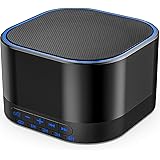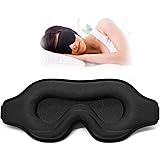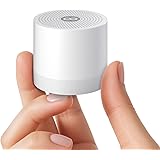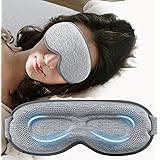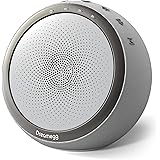Finding Your Ideal Budget Sleeping Pad: Warmth, Comfort, and Affordability Explored
When preparing for outdoor adventures, a quality sleeping pad is recognized as the single most critical component for ensuring a warm and comfortable night’s sleep. However, with many top-tier sleeping pads currently priced well over $200, the pursuit of an affordable alternative becomes a significant challenge for backpackers. The question often arises: Can a sleeping pad deliver both warmth and comfort while maintaining a price point under $100? The accompanying video provides a thorough examination of this very dilemma, testing five popular budget sleeping pads to assess their real-world performance against these high expectations.
1. The Quest for an Affordable, Warm, and Comfortable Sleeping Pad
Backpacking enthusiasts frequently find themselves navigating a delicate balance between gear performance, weight, and cost. A truly effective sleeping pad must offer sufficient insulation to prevent heat loss to the ground, a factor quantified by its R-value, while simultaneously providing adequate cushioning for pressure relief and overall comfort. Achieving these attributes at an accessible price point, particularly for cold weather conditions, is often seen as a formidable task. This article, complementing the insights from the video above, delves deeper into the technical aspects and practical implications of selecting a budget sleeping pad that does not compromise on essential qualities.
2. Understanding Sleeping Pad Technology: R-Value, Baffles, and Materials
The effectiveness of any budget sleeping pad is largely determined by its underlying technology, specifically its R-value, baffle design, and construction materials. Each of these elements plays a pivotal role in delivering warmth and comfort during overnight excursions.
The R-value represents a sleeping pad’s resistance to heat flow, with higher numbers indicating superior insulation properties. For instance, a pad with an R-value of 3.0 to 4.0 is generally considered suitable for three-season use, while values above 5.0 are often recommended for winter camping or very cold conditions. This critical metric helps individuals choose a pad appropriate for anticipated overnight temperatures.
Baffle designs significantly influence a pad’s comfort and structural integrity. Vertical baffles, as seen in some pads, tend to offer good pressure relief, particularly for side sleepers, by allowing the body to sink slightly into the pad. Conversely, dimpled baffles, which feature numerous small raised areas, often function like individual air springs, providing excellent overall pressure distribution and stability for various sleeping positions. The choice of baffle type can dramatically impact how comfortable a sleeping pad feels throughout the night.
Materials also contribute greatly to a pad’s warmth and durability. Many warm sleeping pads incorporate internal insulation layers, such as synthetic fibers or reflective Mylar films, to trap air and reflect body heat. The Naturehike pad, for example, utilizes suspended Mylar film, which is observed to reflect heat directly back to the sleeper, leading to exceptional warmth. External fabrics are also chosen for their abrasion resistance and softness, impacting both longevity and tactile comfort.
3. The Testing Methodology: A Rigorous Approach to Performance Assessment
A comprehensive evaluation was undertaken to determine whether these budget-friendly options could truly serve as a warm sleeping pad and a comfortable sleeping pad. The testing protocol involved a systematic assessment under realistic outdoor conditions, specifically in a desert environment where ground and air temperatures varied considerably.
Each pad was inflated to approximately 90% capacity, a common practice to balance firmness and cushion. A 20° Fahrenheit (around -7° Celsius) down quilt was used as the primary top insulation, complemented by Alpha Direct base layers worn by the tester, who stands 5’10” and weighs 180 pounds.
1. A minimum of 30 minutes was spent on each pad. This duration was chosen based on prior experience, deemed necessary for the pad to adequately warm up to body temperature, especially when ambient temperatures approached freezing.
2. Comfort was assessed by trying both side and back sleeping positions, with particular attention paid to pressure relief and the sensation of “bottoming out.”
3. Warmth was primarily evaluated while lying on the back, allowing for a consistent contact area and minimizing variables.
4. Initial testing occurred at approximately 10° Celsius, transitioning to overnight lows reaching -1° Celsius. Unexpectedly, high winds with gusts over 100 km/h and sustained speeds of 80 km/h necessitated a shift in the final overnight comparison to a rental SUV, allowing the comparison of the top two pads to continue in controlled, yet cold, conditions.
4. In-Depth Review of Budget Sleeping Pads
Five different budget sleeping pads were put through their paces, each presenting a unique combination of features, weight, R-value, and price. Below is an overview of their performance, highlighting their strengths and weaknesses.
The Flextail R5
Priced at $140, this pad weighs 727 grams and boasts a respectable R-value of 5.6. Its 2.7-inch thickness and vertical baffles contribute to a high level of comfort, particularly for side sleepers, due to effective pressure relief. Despite lacking insulation in its two side baffles, it performed surprisingly well in terms of warmth until temperatures approached freezing. At lower temperatures, some cold transfer was noted.
The Naturehike R5
This pad stands out for its exceptional warmth, largely attributed to its suspended Mylar film insulation, which effectively reflects body heat. With an R-value of 5.8, it was demonstrably the warmest among the tested pads. Costing only $70 and weighing 594 grams, it offers a great warmth-to-weight ratio. Its 3.15-inch thickness and dimpled baffles provide decent comfort, though the small “air springs” may not offer as much travel or pressure relief as other dimpled designs, potentially leading to some users experiencing bottoming out, especially side sleepers.
The OneTigris Obsidian
At $80, this pad was found to be the most comfortable sleeping pad in the test, primarily due to its 3.15-inch thickness and well-executed dimpled baffle system. Weighing 812 grams, it is the heaviest option, but this weight contributes to its superior pressure relief for both side and back sleeping. Initially, it provided excellent warmth at 10° Celsius. However, as temperatures dropped to -1° Celsius overnight, a noticeable decrease in warmth was experienced, which was somewhat disappointing given its weight.
The Decathlon MT500 Insulated
This was the most affordable pad at $60, weighing 644 grams. Its R-value of 3.3, the lowest of the group, accurately reflected its performance in cold conditions. At only 2 inches thick, it was the thinnest pad, and its vertical baffles, made from a stiffer, grittier material than the Flextail, offered less comfort. The tester, at 180 pounds, frequently bottomed out. The pad’s heat-press baffle system also created thin areas prone to heat loss, making it unsuitable as a warm sleeping pad for temperatures around 10° Celsius and below.
The Kilos Gear Aerocloud Ultralight
Priced at $113, this pad is the lightest at 489 grams and the thickest at 4 inches. Despite its impressive thickness, its R-value of 3.8 and complete lack of insulation meant it struggled significantly with warmth. The pad felt cold from the outset, making it unsuitable for anything but very warm temperatures. Comfort was on par with the Naturehike, but for different reasons: its greater thickness offered some compensation for less effective pressure relief.
5. Key Takeaways on Warmth, Comfort, and Weight
The detailed testing of these budget sleeping pads revealed a clear pattern: compromises are an inherent part of the budget gear landscape. No single pad excelled in all three categories of warmth, comfort, and minimal weight without some trade-off.
1. **Warmth vs. Cost**: The Naturehike R5 emerged as the clear winner for warmth, impressively performing with an R-value of 5.8 at a highly competitive price point of $70. Its use of suspended Mylar film proved exceptionally effective. This pad certainly challenges the notion that a warm sleeping pad must come with a premium price tag.
2. **Comfort vs. Weight**: The OneTigris Obsidian offered unparalleled comfort among the tested pads, largely due to its thickness and excellent dimpled baffles. However, this comfort comes at the expense of being the heaviest option at 812 grams. For those prioritizing sleep quality over ultralight packing, this could be a worthwhile trade-off.
3. **Compromises in Budget Options**: Even expensive pads often involve compromises. For budget sleeping pads, these trade-offs are simply more pronounced. Whether it’s the Decathlon’s insufficient R-value for cold conditions or the Kilos Gear’s lack of insulation despite its thickness, each pad had its limitations.
Ultimately, the two pads that stood out for further consideration were the OneTigris and the Naturehike. The Naturehike’s impressive warmth-to-price ratio makes it a strong contender, especially for those seeking a highly effective warm sleeping pad without breaking the bank. The OneTigris, while heavier and less warm in freezing temperatures than expected for its weight, still provides exceptional comfort, which is invaluable for a good night’s sleep in the backcountry.


